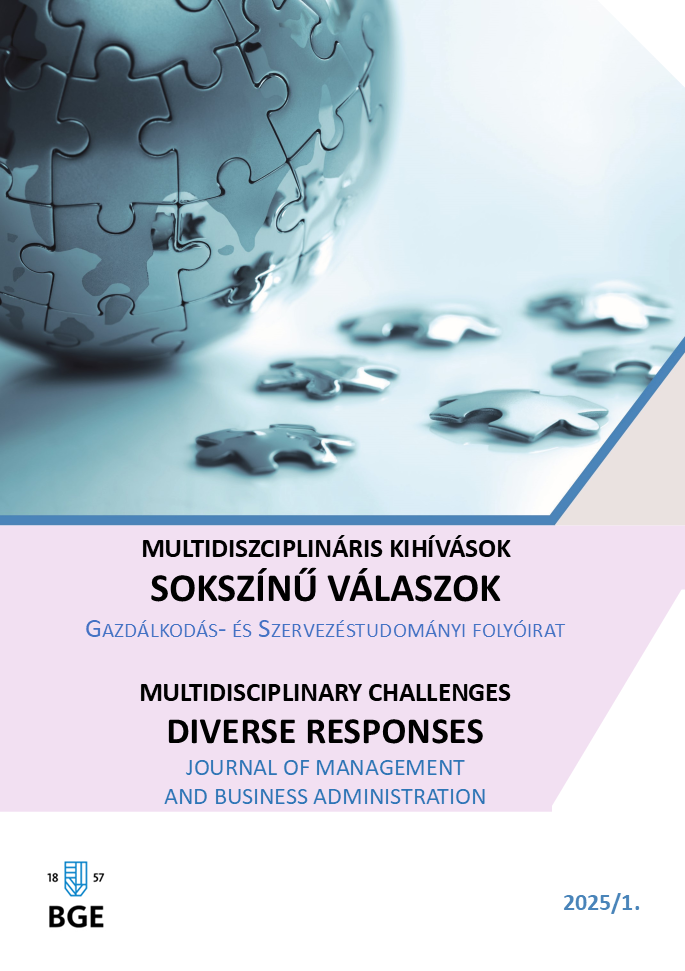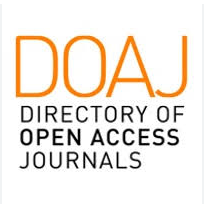Az elegancia kultúrája
A divat szerepe a nemzetközi kapcsolatokban és kommunikációban
Absztrakt
A divatdiplomácia kanonizálása ugyan még folyik, egyre többször kerül elő a tudományos párbeszédben. Ennek oka, hogy a mind inkább globalizált világunkban egyrészt a soft power egyre „puhább” területeken érvényesül, másrészt szükség van olyan új utakra, amelyek az egységet és a kölcsönös tiszteletet jelenítik meg, miközben a diplomácia megszokott formáival kapcsolatos szkepticizmus elkerüli őket. A divatdiplomácia üzenetek közvetítésére alkalmas komplex társadalmi kód, ugyanakkor interkulturális mediációs felületként nemcsak kulturális, de gazdasági dimenziókkal is bír. A tanulmány a divatdiplomácia gyakorlati alkalmazását vizsgálja különböző földrajzi és kulturális környezetben szolgálatot teljesítő magyar diplomaták körében. A kutatás tizenhét magyar nagykövetség válaszaira támaszkodva térképezi fel milyen szerepet tölt be az öltözködés a diplomáciai munkában, valamint, hogy mennyire használják stratégiai eszközként. Az eredmények azt mutatják: az öltözködés fontosságát minden vizsgált kultúrkörben elismerik, de a mérték és alkalmazás módjában különbségek tapasztalhatók. A nyugati kultúrkörben dolgozó diplomaták körében leggyakoribb a divatdiplomácia alkalmazása, míg a közel-keleti térségben a női részvétel alacsonyabb aránya és a társadalmi korlátok határozzák meg az alkalmazhatóságot. A kutatás kitér a női diplomaták különleges szerepére és a kulturális kisajátítás kérdésére is. Összességében megállapítható, hogy a divatdiplomácia hatékony kommunikációs és imázsépítő eszköz, amely különböző kulturális kontextusokban is hozzájárul a diplomáciai sikerességhez.
Hivatkozások
Albright, M., 2009. Read My Pins: Stories from a Diplomat's Jewel Box. New York: HarperCollins
Allison, G., 2008. The Cuban Missile Crisis. In S. Smith, A, Hatfield & T. Dunne, eds., 2008. Foreign Policy. Oxford: Oxford University Press. pp. 208-228.
Anagondahalli, D. & Zhu, L., 2015. Culture's role in public diplomacy: predicting and preventing crises. The Journal of International Communication. 22(1), 64-81. https://doi.org/10.1080/13216597.2015.1076733
Asafo-Adjei, S., 2020. The Promotion of Cultural Diplomacy Through the Use of African Print Fashion: The case of Ghana. [Master’s thesis, University of Ghana]. Accra: Legon Centre for International Affairs and Diplomacy, University of Ghana Elérhető: http://ugspace.ug.edu.gh/handle/123456789/35175 (2025.03.16.)
Bauknecht, S., 2017. The politics of style: What messages do first ladies send trough their fashion?. [online] Elérhető: https://www.post-gazette.com/life/fashion/2017/07/17/Melania-Trump-style-Michelle-Obama-fashion-trends-first-lady/stories/201707170004 (2025.03.16.)
Baldwin, D. A., 2000. Success and Failure in Foreign Policy. Annual Review of Political Science, 3, 167-182.
Barrington, A., 2020. Women in Diplomacy: The Equality Agenda, Diplomatica 2(1), 154-162. Elérhető: https://brill.com/view/journals/dipl/2/1/article-p154_154.xml (2025.05.22.)
Bond, K., 2025. "Fashion does matter – why what Kate wears will always be important" [online] Elérhető: https://www.harpersbazaar.com/uk/fashion/a63662403/kate-princess-of-wales-clothes-designers/ (2025.05.25.)
Brand Finance, 2018. British Luxury 2018 [online] Elérhető: https://www.dropbox.com/scl/fi/pml7dxc18zbo5td7ay97v/Brand-Finance-Report-25.10.18.pdf?rlkey=ly0j9ox91j4h97jcnrw6okjfw&e=3&dl=0 (2025.03.16.)
Bulur, Ö., 2016. Fashion diplomacy: More than simply a wardrobe choice [online] Elérhető: https://www.dailysabah.com/feature/2016/10/24/fashion-diplomacy-more-than-simply-a-wardrobe-choice (2025.03.16.)
Carmi, N., Alsayegh, M., & Zoubi, M., 2019. Empowering women in water diplomacy: A basic mapping of the challenges in Palestine, Lebanon and Jordan. Journal of Hydrology. 569, 330-346 https://doi.org/10.1016/J.JHYDROL.2018.12.011
Colombo, E., 2015. Multiculturalisms: An overview of multicultural debates in western societies. Current Sociology, 63, 800-824. https://doi.org/10.1177/0011392115586802
Dubinsky, I., 2021. China’s Stadium Diplomacy in Africa. Journal of Global Sport Management, 9(4), 761–778. https://doi.org/10.1080/24704067.2021.1885101
F. Dósa, K., Szatmári, J. A. & Szentesi, R., 2018. Divat, kultúra, történelem. Divattörténeti tanulmányok. Budapest: Eötvös Kiadó
Ferrier, M., 2016. Fashion diplomacy? 'Kate Effect' is alive and well. [online] Elérhető: https://www.theguardian.com/uk-news/2016/apr/16/fashion-diplomacy-kate-effect-is-alive-and-well (2025.03.16.)
Fillingham, H., 2020. How Kate Middleton pays tribute with her outfits on her royal. [online] Elérhető: https://www.hellomagazine.com/fashion/news/gallery/2020031286088/kate-middleton-displays-diplomatic-dressing-royal-tours/1/ (2025.03.16.)
Forintos-Szűcs, A., 2022. július 08. Személyes interjú
Friedman, V., 2021. In Pakistan, Kate Middleton Aces Fashion Diplomacy. [online] Elérhető: https://www.nytimes.com/2019/10/18/fashion/kate-middleton-pakistan-fashion.html (2025.03.16.)
Halász, I., 2010. Diplomácia és diplomaták. Budapest: Aula Kiadó
Hallberg, M., 2017. The Princess Charlotte Effect Is Very Real. [online] Elérhető: https://observer.com/2017/05/princess-charlotte-effect-net-worth-royals/ (2025.03.16.)
Hossó, N., 2015. Protokoll a diplomácia és a nemzetközi kapcsolatok hátterében. Budapest: L’Harmattan
Hungarian Fashion & Design Agency (n. d.) Nemzeti Divatipari Stratégia 2020-2030 [online] Elérhető: https://hfda.hu/documents/prod/Nemzeti-Divatipari-Strategia-2030-v0531_1.pdf (2025.03.31.)
Ibanez-Tirado, D., 2016. Gold teeth, Indian dresses, Chinese lycra and ‘Russian’ hair: Embodied diplomacy and the assemblages of dress in Tajikistan. Cambridge Journal of Anthropology, 34(2), 23-41. https://doi.org/10.3167/ca.2016.340203
Karamy, S. E., 2020. West Java’s Fashion Diplomacy to South Australia: A Model of Sister Province. Tourism and Sustainable Development Review Journal, 1(2), 65-75. https://doi.org/10.31098/tsdr.v1i2.5
Khan, R., 2019. ‘Be creative’ in Bangladesh? Mobility, empowerment and precarity in ethical fashion enterprise. Cultural Studies, 33(6), 1029–1049. https://doi.org/10.1080/09502386.2019.1660696
Kreft, A., Niklasson, B., & Towns, A., 2022. Do gender patterns in diplomacy disappear over time?. European Journal of Politics and Gender. https://doi.org/10.1332/251510821x16473315423448
Lecler, R., & Goltrant, Y., 2025. Gendering Diplomatic Careers. Distance and Time in International Assignment Practices Among 600 French Diplomats. Gender, Work & Organization. 00:1-22 https://doi.org/10.1111/gwao.13233
Lenard, P., & Bálint, P., 2020. What is (the wrong of) cultural appropriation?. Ethnicities, 20, 331-352. https://doi.org/10.1177/1468796819866498
Mnakri, M., 2023. Gender and IR in the MENA Region: The Role of Arab Women’s Diplomacy in Peacebuilding, Decision Making, and Conflict Resolution. Journal of Advanced Research in Social Sciences, 6(3). https://doi.org/10.33422/jarss.v6i3.1039
Nisbett, R. E., 2003. The geography of thought: How Asians and Westerners think differently ... and why. Los Angeles: Free Press
Nye, J.S., 1990. Soft power. Foreign Policy, 80, 153–171. https://doi.org/10.2307/1148580
Nye, J.S., 2004. Soft power and American foreign policy. Political Science Quarterly, 119(2), 255-270. https://doi.org/10.2307/20202345
Nye, J.S., 2011. The Future of Power. New York: PublicAffairs
Nye, J. S., 2014. The Information Revolution and Soft Power. Current History 113(759), 19-22. https://doi.org/10.1525/curh.2014.113.759.19
Oudatzi, K., 2019. The Crucial Role of the Museums in Allying Alternative Forms of Diplomacy. In A. Kavoura, E. Kefallonitis & A. Giovanis, eds., 2019. Strategic Innovative Marketing and Tourism: 7th ICSIMAT, Athenian Riviera, Greece, 2018. Berlin: Springer. pp. 109-117. https://doi.org/10.1007/978-3-030-12453-3
Popovic, M., 2017. The Roles and Practices of Fashion in Cultural Diplomacy. In M. Dragicevic Secic, ed., 2017. Cultural Diplomacy: Arts, Festivals and Geopolitics (pp. 251-264). Belgrád: Ministry of Culture and Media of Republic of Serbia & Institute for Theatre Film Radio and Television Elérhető: CULTURAL DIPLOMACY FINAL .pdf (confluxcenter.org) (2025.03.16.)
Pröhle, G., 2007. A magyar kultúra szerepe Magyarország nemzetközi politikai és gazdasági kapcsolatainak fejlesztésében [online] Elérhető: https://kisebbsegkutato.tk.hu/uploads/files/archive/717.pdf (2025.03.16.)
Rana, N., 2024. Fashion Diplomacy: The Role of Fashion in Cultural Exchange. International Journal for Innovative Research in Multidisciplinary Field 10(1) https://doi.org/10.2015/IJIRMF/202401001
Sanchez, C., 2025. Kensington Palace makes rare statement about Kate's wardrobe after criticism. Harper’s Bazaar [online] Elérhető: https://www.harpersbazaar.com/uk/fashion/a63782043/kensington-palace-statement-kate-middleton-wardrobe-criticism/ (2025.05.22.)
Spence, C., 2016. Gastrodiplomacy: Assessing the role of food in decision-making. Flavour 5(4). https://doi.org/10.1186/s13411-016-0050-8
Towns, A., & Niklasson, B., 2016. Gender, International Status, and Ambassador Appointments. Foreign Policy Analysis, 13, 521-540. https://doi.org/10.1093/FPA/ORW039
Yama, A., Mukem, A. Jermsittiparsert, K., 2019. The Mediating Effect of Organizational Culture on the Relationship between Total Quality Management, Entrepreneurial Orientation and Performance: A Case of Thai Universities. International Journal of Innovation, Creativity and Change. 6(10), 359-380
Velayutham, S., & Wise, A., 2001. Dancing with Ga(y)nesh: Rethinking cultural appropriation in multicultural Australia. Postcolonial Studies, 4, 143-160. https://doi.org/10.1080/13688790120077489.
Vér, E. V., 2016. „… Elvárják, hogy mindig szépen és kifogástalanul nézzek ki…”, In F. Dósa K., Szatmári J. A. & Vér E. V., szerk., 2016. Divat, egyén, társadalom. A divattörténeti tudományos konferencia tanulmánykötete. Budapest: Eötvös Kiadó. pp. 71-90.
Warsi, F., 2020. Gender Difference Among Employees Working In Diplomatic Missions. Pakistan Journal of International Affairs 3(2). 88-105. https://doi.org/10.52337/PJIA.V3I2.21


























